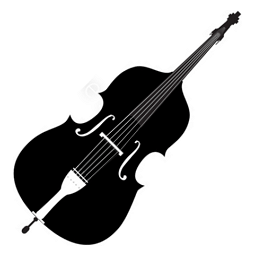The Double Bass, often called the string bass or contrabass, is an essential part of many musical genres, especially since the instrument provides the lowest notes of the standard orchestra. At six feet tall (1.8 meters), it is the largest instrument of the string family. The double bass is used in classical music, jazz, folk, ragtime, bluegrass, and country music, common in chamber works and ensembles plus string quartets, quintets, and septets. Contrabass, from the Italian 'contra basso' is the lowest pitched of the stringed instruments, typically an octave lower than other bass instruments.
The double bass has been around since its development in the 16th century, born of its predecessor the violone, which also played the lowest notes of the strings in use at the time. The violone was slightly smaller than the string bass but larger than the viola. After about a hundred years more had passed, the double bass was adopted into the viol family of instruments and entered the orchestra as a mainstay.
The double bass range extends from its highest note 'D' above 'middle C' to its lowest note C, three octaves below middle C. This 'low C' is obtained by a fifth string or a lever on the low 'E' string. The total range of the double bass is just over three octaves.
Franz Schubert composed his piano quintet in A major, 'Trout Quintet' in 1819 which did not debut until after his death in 1829. Beethoven began writing his chamber piece 'Septet' in E-flat major about 1799. The instruments included were the clarinet, horn (french horn), bassoon, violin, viola, cello, and double bass. Since those days, over 200 concertos have been composed for the double bass.
Modern composers like James Prokofiev reached for the double bass lows and wrote several pieces showcasing the double bass. Charles Mingus was the first known virtuoso of the jazz double-bass during the mid 20th century. Mingus, dubbed the greatest of the jazz bassists, expanded its use and extended its capabilities beyond expectations with his skills as a master of the instrument. Most modern orchestras worth their weight will carry at least six or eight double basses. It is favored by many modern composers for its range of extremely low and unusual tonal effects. Listeners can literally feel the deep vibrations of a double bass, making it even more popular for use in modern performance pieces. These days, you can find double-bass performers everywhere in music from the streets to the symphony theater hall.
Diagram of the Double Bass
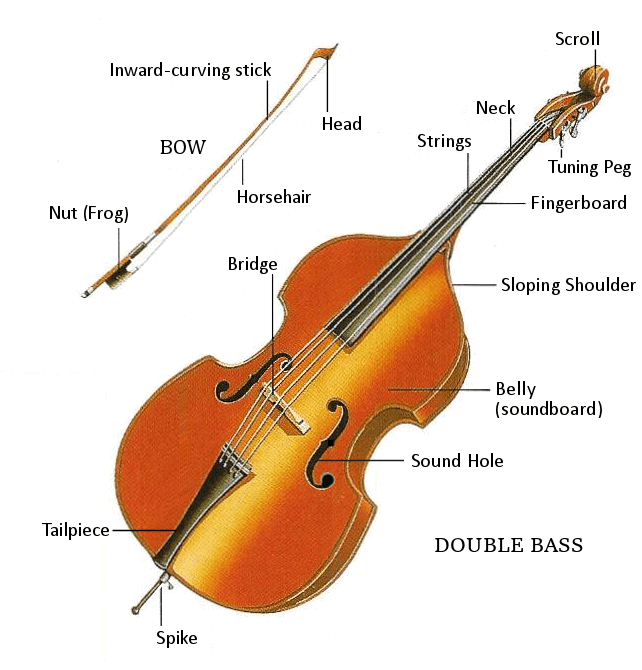
Use of the Double Bass
The double-bass player most often plays while standing. The instrument stands on the floor on its spike. Sometimes the player is seated with the bass between the knees.
The player holds the neck with the left hand with the thumb underneath.
The left hand fingers press the strings at different points up and down the fingerboard to produce the proper notes. At times, two fingers must be used due to the strings' large size. See image right
The right hand holds and manuveurs the bow across and against the strings. The right hand fingers are also used to pluck the strings.

Classification of Instruments
The Hornbostel-Sachs system classifies the double bass as a chordophone which produce sound via strings stretched between two points. All stringed instruments are classified as chordophones. Similar instruments in the strings group are the violin, viola, cello, and double bass.
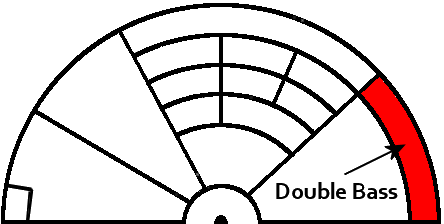
Where in the Orchestra?
The double-bass are seated to the front right of the orchestra behind the cellos.
Song Featuring the Contrabass
Video Left: David Gilmour with Pink Floyd perform 'Shine On You Crazy Diamonds' at the Royal Festival Hall in 2002.
Noteworthy Double Bass Players
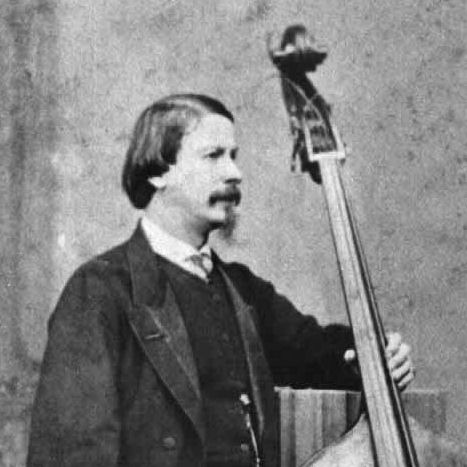
Giovanni Bottesini
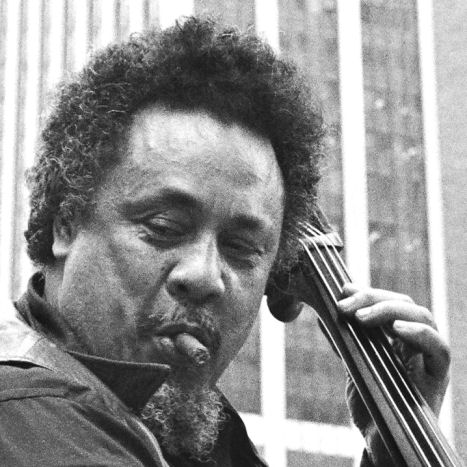
Charles Mingus
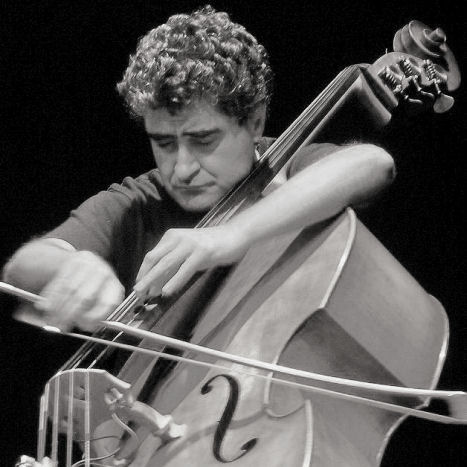
Renaud Garcia Fons
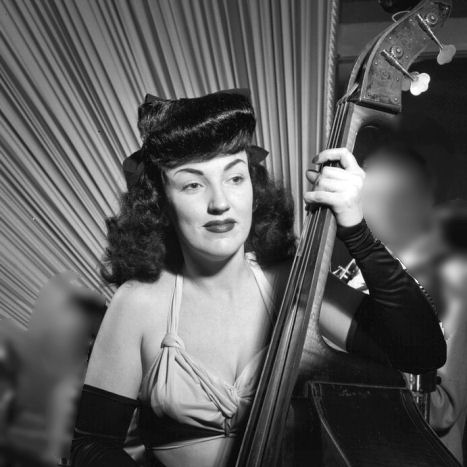
Teddy Faye V Garry


